Photo

Fernand Léger Still Life with a Beer Mug 1921
Joseph Fernand Henri Léger was a French painter, sculptor, and filmmaker. In his early works he created a personal form of cubism (known as "tubism") which he gradually modified into a more figurative, populist style. His boldly simplified treatment of modern subject matter has caused him to be regarded as a forerunner of pop art.
#fernand leger#still life with a beer mug#1921#20s art#cubism#oil on canvas#french art#art#painting#fine art#historical art#historical painting#famous art#famous paintings#art lover
19 notes
·
View notes
Photo

Early 1900s Humor Magazine Illustrations by Franz Wacik
Franz Wacik was an Austrian artist who was especially devoted to children and young adult book illustrations. This particular series of illustrations were for the humor magazine Die Muskete and circa 1906-1911.
#franz wacik#austrian artist#art#illustration#art nouveau#poster#1900s art#space#alien#vintage illustration#retro aesthetic#fine art#design#famous art#historical art#famous paintings#history of art#art lover
17 notes
·
View notes
Photo
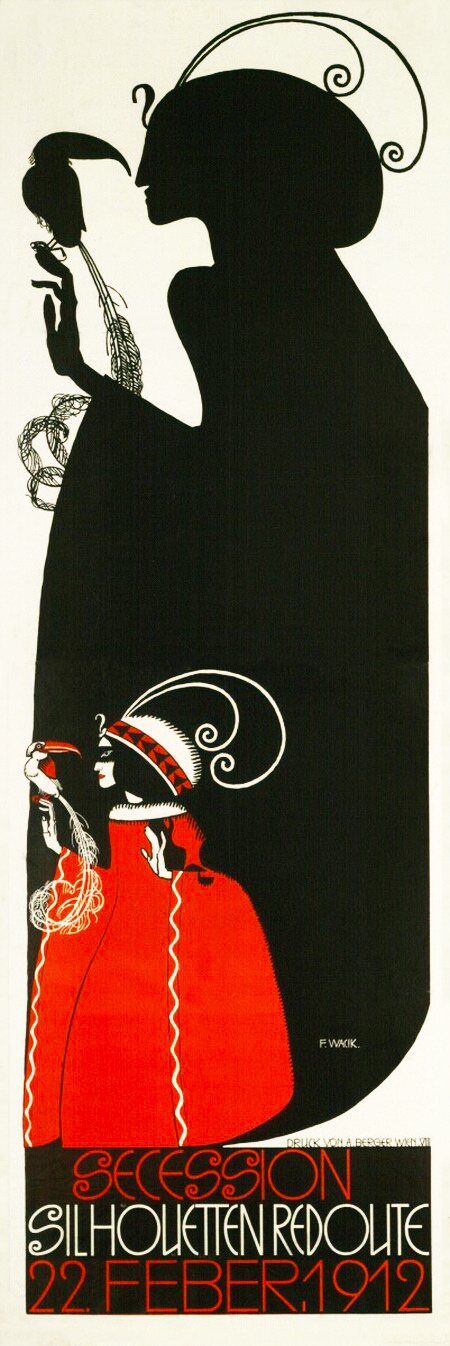
Franz Wacik Secession Silhouetten Redoute 1912
#franz wacik#secession silhouetten redoute#1912#art#art nouveau#litography#historical art#historical painting#fine art#retro aesthetic#vintage#famous art#famous paintings#european art#Austrian painter#graphic art
35 notes
·
View notes
Photo
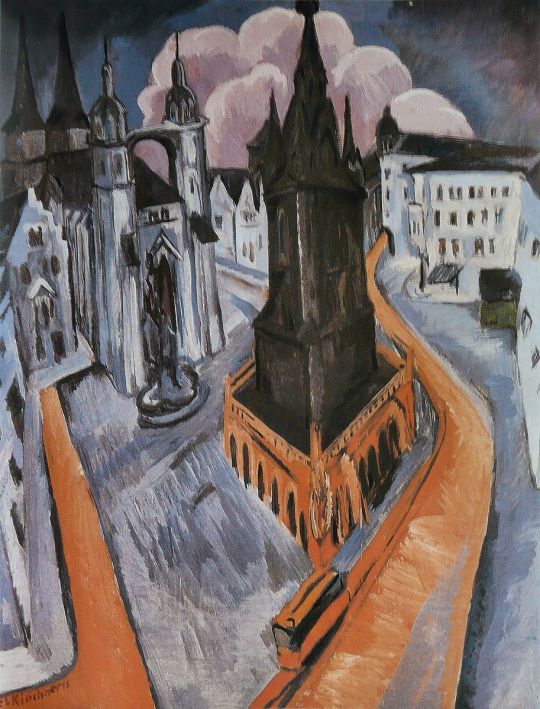
Ernst Ludwig Kirchner Der Rote Turm in Halle 1915
The Red Tower in Halle - The painting shows the market square in the town of Halle with the Red Tower. The 15th century neo-Gothic bell tower surmounts a red brick building. On the left stands the Marktkirche with its four towers. Only the tram crosses the deserted square. The view is plunging and unfolds parallel to the plane of the painting. Clouds of smoke in the background recall the proximity of war.
#ernst ludwig kirchner#der rote turm in halle#1915#the red tower in halle#expressionism#german expressionism#halle#red tower#germany#art#1910s art#painting#oil on canvas#fine art#famous art#famous paintings#historical art#history of art#historical painting#old art#vintage#retro#architecture#art lover
45 notes
·
View notes
Photo

Amedeo Modigliani Portrait of Jeanne Hébuterne 1918
French painter and art model best known as the frequent subject and common-law wife of the artist Amedeo Modigliani. She took her own life the day after Modigliani died, and is now buried beside him.
Described by the writer Charles-Albert Cingria (1883–1954) as gentle, shy, quiet, and delicate, Jeanne Hébuterne became a principal subject for Modigliani's art.
#amedeomodigliani#portrait of jeanne hebuterne#1918#1900s#art#painting#oil on canvas#history of art#historical painting#fine art#historical art#famous art#famous paintings#art lover
13 notes
·
View notes
Photo

Grant Wood American Gothic 1930
American Gothic is a 1930 painting by Grant Wood in the collection of the Art Institute of Chicago. Wood was inspired to paint what is now known as the American Gothic House in Eldon, Iowa, along with "the kind of people [he] fancied should live in that house". It depicts a farmer standing beside his daughter – often mistakenly assumed to be his wife. The painting is named for the house's architectural style.
#grant wood#amercan gothic#1930#30s art#20th century art#art#painting#oil on canvas#historical art#historical painting#fine art#famous art#famous paintings#history of art#farmers#midwestern american#farmland#regionalism#realism#american midwest
45 notes
·
View notes
Photo

George Tooker, The Subway, 1950
The Subway is the best known of the figurative paintings George Tooker made in response to the social injustices and isolation of postwar urban society—paintings that find an analogue in the period’s existentialist philosophy. In The Subway, Tooker employed multiple vanishing points and sophisticated modeling to create an imagined world that is presented in a familiar urban setting. Whether closed off in tiled niches or walking down the long passageway, each androgynous, anxiety-ridden figure appears psychologically estranged, despite being physically close to others in the station. The central group of commuters is locked in a grid of the metal grating’s cast shadows, while the labyrinthine passages seem to lead nowhere, suspending the city’s inhabitants in a modern purgatory. As Tooker remarked, he chose the subway as the setting for this painting because it represented “a denial of the senses and a negation of life itself.”
#george tooker#the subway#1950#50s art#art#painting#figurative art#social realism#oil painting#famous art#famous paintings#historical painting#historical art#tooker#fine art#art lover#vintage
23 notes
·
View notes
Photo
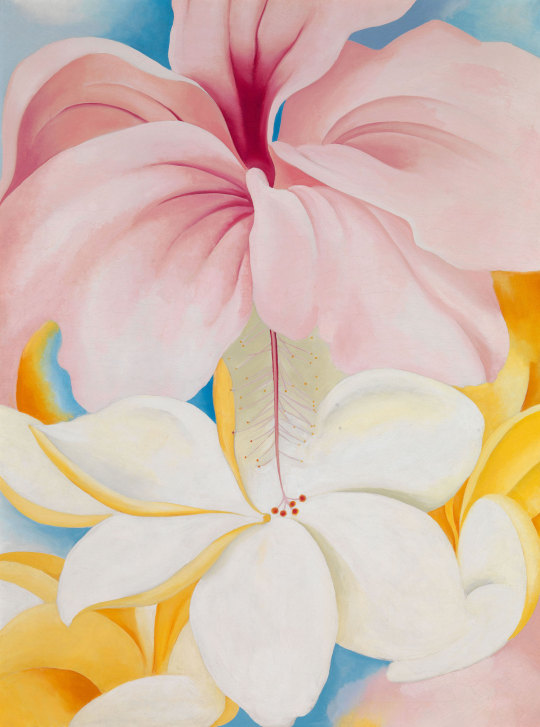
Georgia O'Keeffe Hibiscus with Plumeria, 1939
Georgia O'Keeffe was an American artist who painted nature in a way that showed how it made her feel. She is best known for her paintings of flowers and desert landscapes.
She played an important part in the development of modern art in America, becoming the first female painter to gain respect in New York's art world in the 1920s. Her unique and new way of painting nature, simplifying its shapes and forms meant that she was called a pioneer.
#georgiaokeeffe#georgia o keeffe#hibiscus with plumeria#1939#30s art#flowers#floral#painting#art#fine art#oil on canvas#nature#floral pattern#garden#botany#history of art#famous paintings#historical painting#famous art#american modernism#precisionism#visions of Hawaii
40 notes
·
View notes
Photo
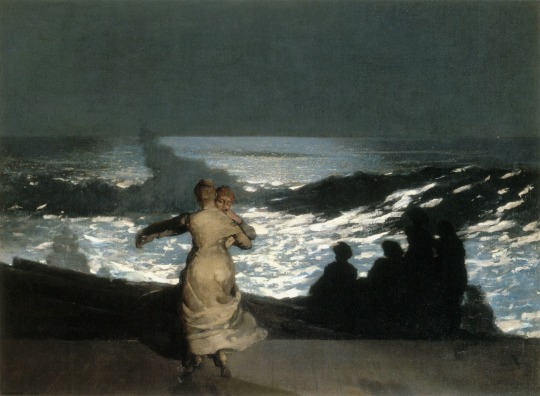
Winslow Homer Summer Night 1890
This nocturnal scene by the sea transcends observed reality through a keen sense of poetry and mystery. The light and shade effects blur shapes, while the ghostly silhouettes of two women dance on the shore. Although it may well have been influenced by Courbet's Waves, the lyricism tinged with mysticism expressed by Homer helped develop a feeling for nature that is peculiarly American.
#winslow homer#summer night#painting#oil on canvas#two women dancing on the beach#love#landscape#art#fine art#history of art#lesbian art#women in art#lgbt art#famous paintings#19th century art#famous art#historical painting#romantic#art lover
118 notes
·
View notes
Photo
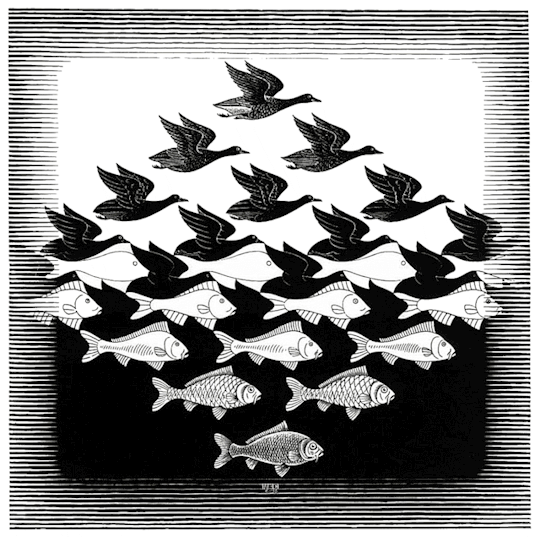
M. C. Escher Sky and Water I
The basis of this print is a regular division of the plane consisting of birds and fish. Both prints have the horizontal series of these elements—fitting into each other like the pieces of a jigsaw puzzle—in the middle, transitional portion of the prints. In this central layer the pictorial elements are equal: birds and fish are alternately foreground or background, depending on whether the eye concentrates on light or dark elements. The birds take on an increasing three-dimensionality in the upward direction, and the fish, in the downward direction. But as the fish progress upward and the birds downward they gradually lose their shapes to become a uniform background of sky and water, respectively.
According to Escher: "In the horizontal center strip there are birds and fish equivalent to each other. We associate flying with sky, and so for each of the black birds the sky in which it is flying is formed by the four white fish which encircle it. Similarly swimming makes us think of water, and therefore the four black birds that surround a fish become the water in which it swims."
This print has been used in physics, geology, chemistry, and in psychology for the study of visual perception. In the pictures a number of visual elements unite into a simple visual representation, but separately each forms a point of departure for the elucidation of a theory in one of these disciplines.
M.C Escher, Sky and Water I best exemplify figure ground-reversal.
#m. c. escher#sky and water#optical illusion#optical art#dutch artist#jigsaw puzzle#light and dark elements#visual perception#maurits cornelis escher#lithograph#mezzotint#impossible objects#explorations of infinity#reflection#infinity#symmetry#hyperbolic geometry#optical#illusion#art#history of art#famous art#art lover
17 notes
·
View notes
Photo

Martin Lewis ‘Spring Night, Greenwich Village’ ca.1930.
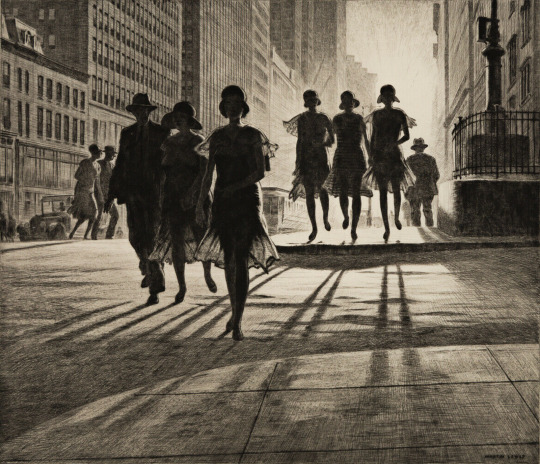
‘Shadow Dance‘ ca.1930.
(prints via art_cart)
393 notes
·
View notes
Photo

Katsushika Hokusai Kohada Koheiji (こはだ小平二)
Print shows a scene from a Japanese legend about a man drowned in a swamp by his wife and her lover and who returns to haunt them in revenge; it depicts a skeletal ghost with flames around him who returned to scare the couple while they are in bed together under a mosquito net.
#katsushikahokusai#kohada koheji#japanese art#japanese mythology#ghost legend#ghost stories#horror#history of art#mytology#legend#japanese legends#manga#edo period#ukiyoe#art#painting#woodblock print#19th century art#famous art#vintage#retro#skeleton#art lover
7 notes
·
View notes
Photo
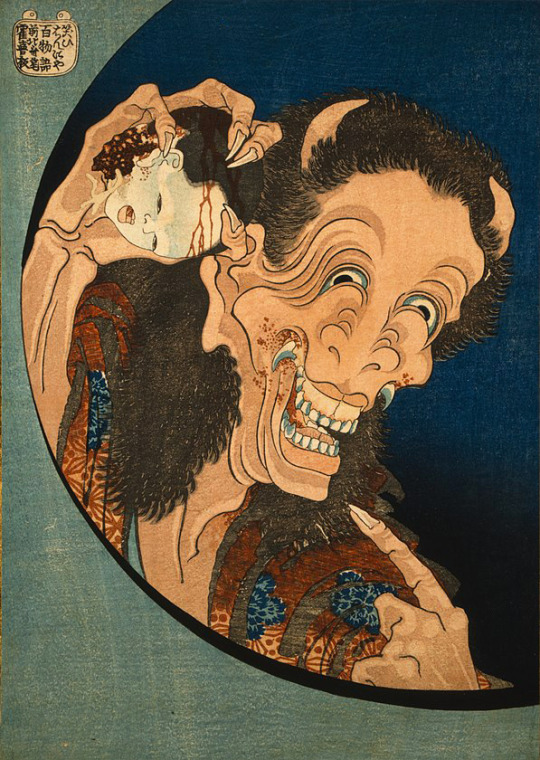
Katsushika Hokusai The Laughing Hannya (Warai-hannya)
In this print Hokusai combined two folklore monsters, a hannya, old woman was believed to be changed into a demon because of deep-seated jealousy, and a yamanba ("mountain woman"), a demon believed to devour kidnapped children. In the print the monster is shown reveling in her demonic meal of a live infant. The story is from the Nagano region folklore. Warai-hannya was also called the Laughing Demoness or Ogress.
Hokusai divided the painting with a crescent arc that acts as a divisional line before human world and a supernatural, ghost world.
#katsushikahokusai#the laughing hannya#folklore#monsters#horror#supernatural#ghost legend#japanese art#mythology#japanese mythology#art#painting#historical art#famous art#famous paintings#edo period#ukiyoe#hokusai#manga#19th century art#art lover#one hundred ghost stories
8 notes
·
View notes
Photo

Katsushika Hokusai The Plate Mansion (Sara-yashiki)
The legend from 17th century tells a story of a maid, Okiku, who broke valuable Korean plates and was thrown to a well by her master; another version tells that Okiku throws herself in despair down a well. Another version tells that Okiku broke only one plate; after she was thrown into a well, she turned into a ghost, Yūrei, and the neighbours heard her voice from that well every night, repeating "One... Two... Three... Eight... Nine... I can’t find last one..." After the rumors of this spread, the house was confiscated from the master. When a monk added "ten" for Okiku's count, she finally disappeared. Yet another version tells that Okiku worked for a samurai Aoyama Tessan from Himeji Castle, and after she rejected him Aoyama deceived her into believing that she lost one of the valuable plates. Aoyama offered his forgiveness if Okiku becomes his lover; after her refusal he throws her into a well. She then returned as a spirit to count her plates every night, "shrieking on the tenth count".
The tale was well known in Japan, and has a variety of forms.
#katsushikahokusai#okiku#mytology#japanese art#ghost legend#edo period#ukiyoe#manga#horror#hokusai#woodblock print#history of art#19th century art#famous art#famous paintings#art lover
83 notes
·
View notes
Photo

Remedios Varo Useless Science or the Alchemist 1955
Remedios Varo was influenced by her belief in magic and animistic faiths. She was very connected to nature and believed that there was strong relation between the plant, human, animal, and mechanical world. Her belief in mystical forces greatly influenced her paintings.[15] Varo was aware of the importance of biology, chemistry, physics and botany, and thought it should blend together with other aspects of life.[15] Her fascination for science, including Einstein's theory of relativity and Darwinian evolution, has been noted by admirers of her art.
#remedios varo#usless science#the alchemist#art#painting#oil painting#50s art#historical art#famous paintings#surrealism#spanish surrealist#mysticism#irrealism#magic#animistic faiths#sacred geometry#witchcraft#alchemy#oil on canvas#fine art#historical painting#art lover
67 notes
·
View notes
Photo

Jean-Michel Basquiat Untitled (Skull) 1981
Untitled is a painting created by American artist Jean-Michel Basquiat in 1981. An X-ray-like vision of the head's exposed upper and lower jaw accounts for its misinterpretation as a skull.
Untitled depicts both inside and outside dimensions of a head, existing between life and death. The eyes are listless as if the head was lobotomized. The subdued facial expression is a contrast to the vibrant colors that suggest an abundance of internal activity. Basquiat's use of heads and skulls are deeply rooted in his identity as a Black American and are evocative of African masks. He developed a unique style, which combined expressive and at times violent brushstrokes with words, symbols, and a variety of materials, to confront social issues.
#jean michel basquiat#untitled#skull#1981#80s art#painting#street art#american artist#social issues#abstractexpressionism#abstractart#neo expressionism#graffiti#art#famous art#famous paintings#historical art#modern art#most expensive paintings#art info#art facts#art lover
4 notes
·
View notes
Photo

Jean-Michel Basquiat Dustheads 1982
Dustheads depicts two drug addicts on angel dust as frenetic radiant characters immersed in black backdrop.
#jean michel basquiat#dustheads#angel dust#street art#neo expressionism#most expensive paintings#art#painting#famous art#famous paintings#art lover#graffiti#abstractart#80s style#80s art
7 notes
·
View notes